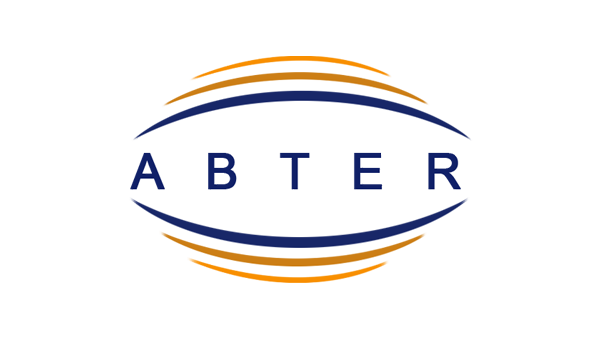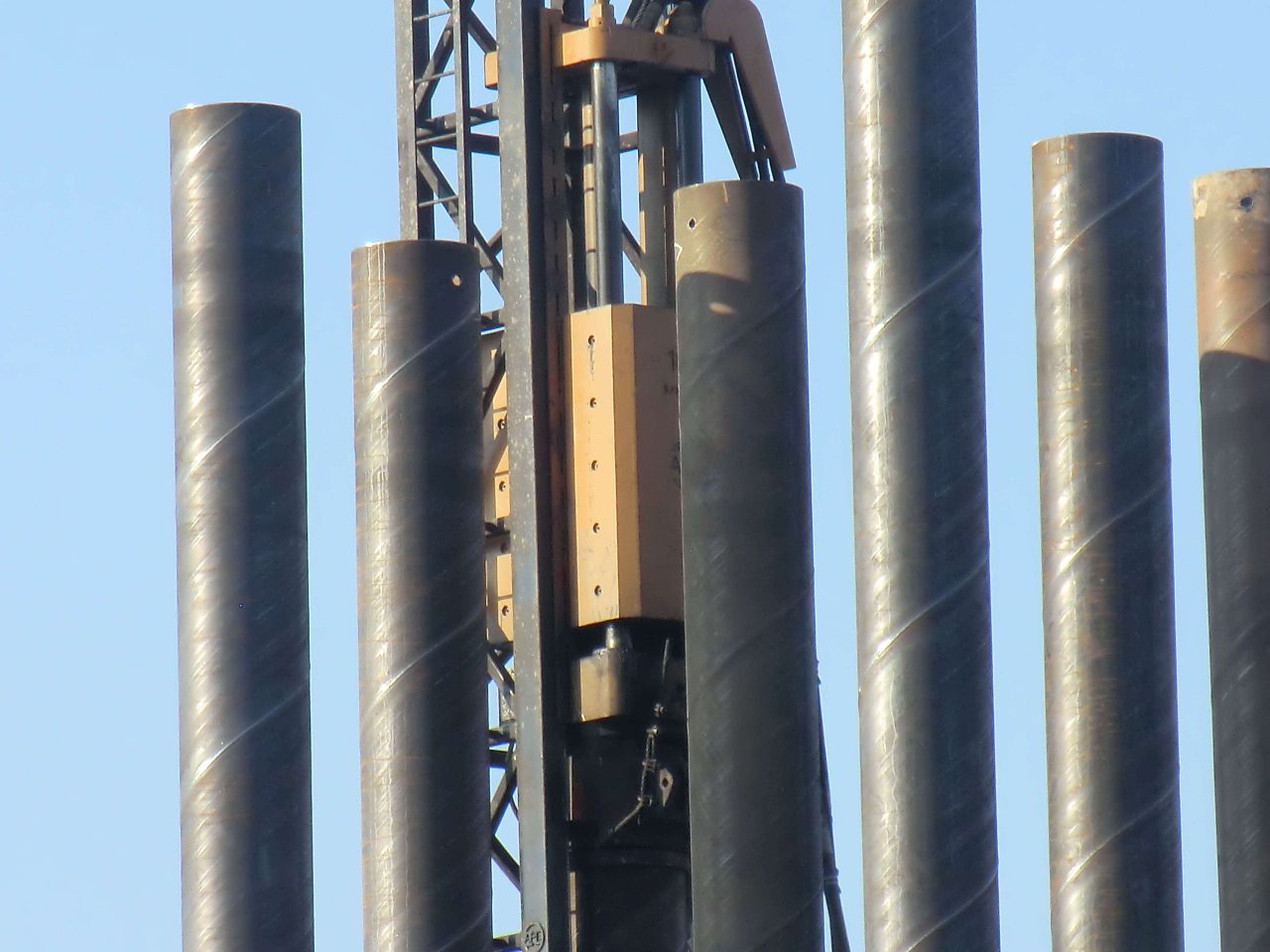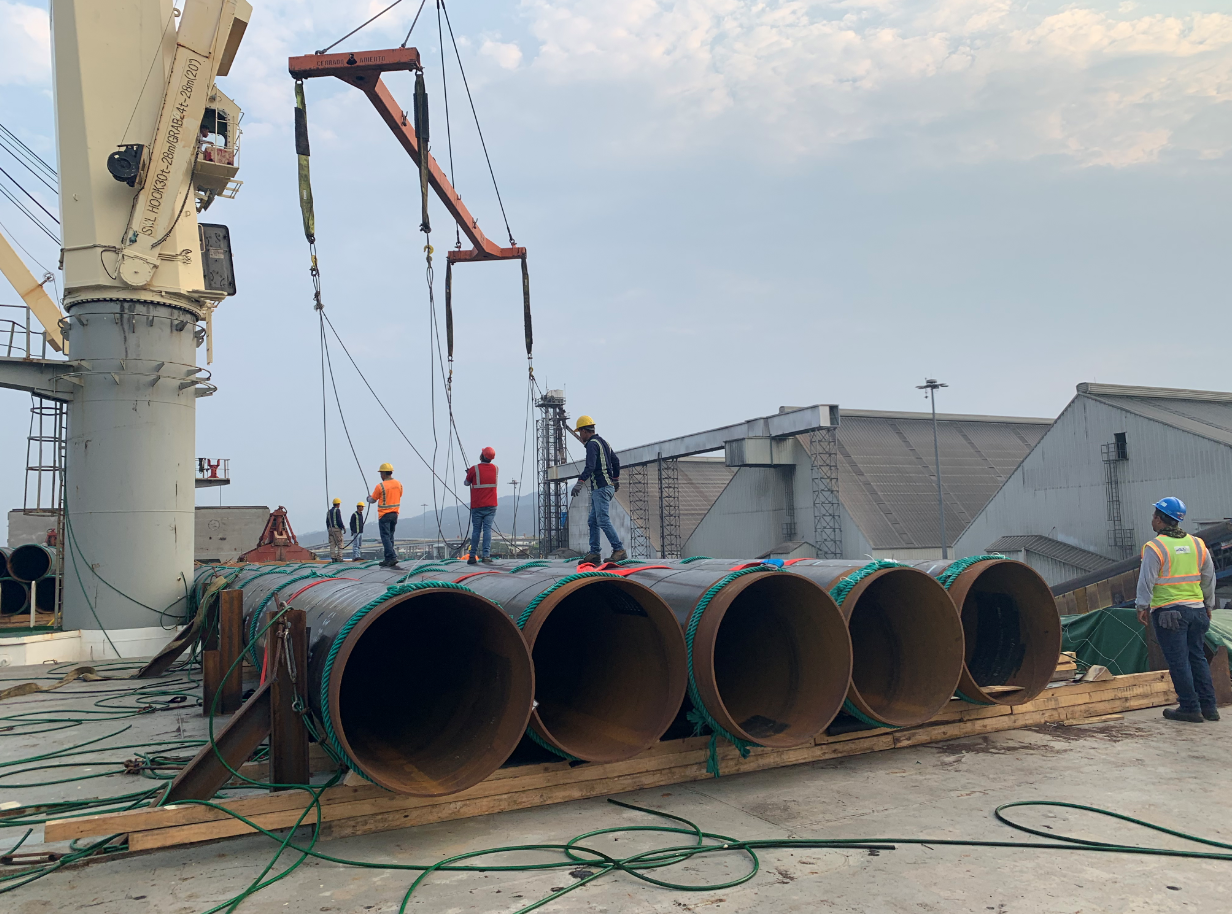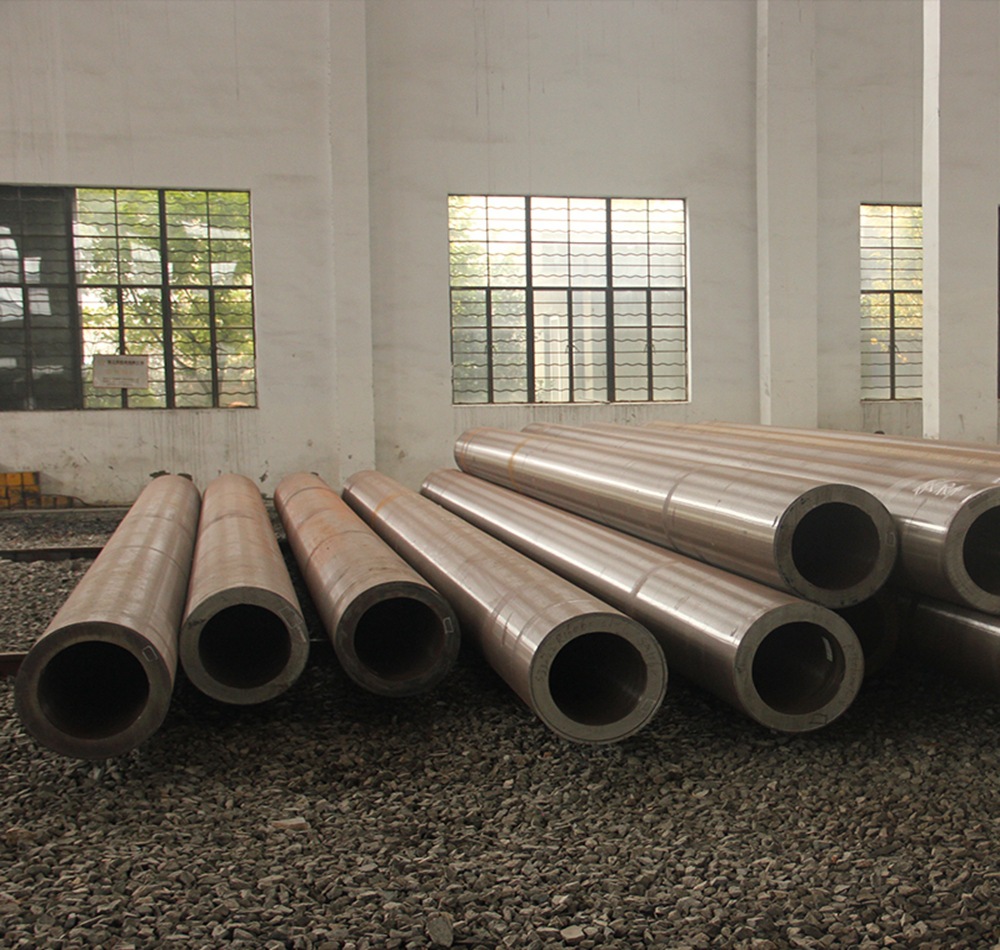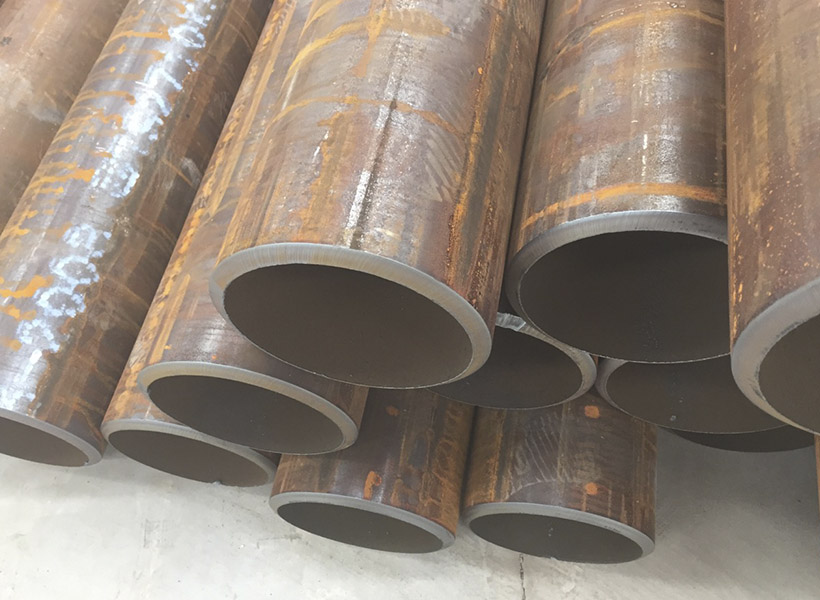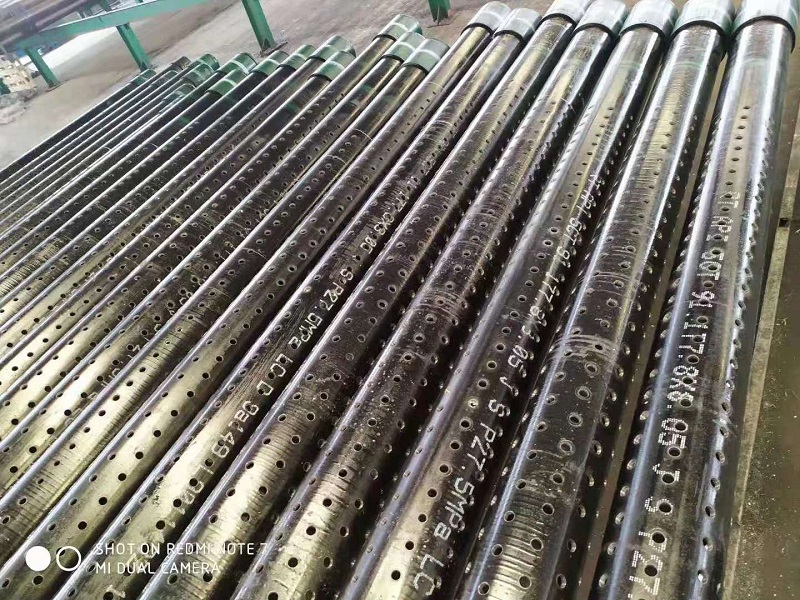تحليل متعمق لدعامات أسقف الأنابيب الفولاذية في الهياكل طويلة المدى (تابع)
تصميم اتصال متقدم وكفاءة مشتركة
تعتمد كفاءة دعامات سقف الأنابيب الفولاذية في الهياكل طويلة المدى بشكل كبير على تصميم وتنفيذ وصلاتها. المفاصل في الانحناء
دعامات الأنابيب, خاصة عند تقاطعات شبكة الوتر, هي النقاط الحرجة حيث تتركز الضغوط. تتضمن أنواع الاتصال الشائعة العقد المتقاطعة الملحومة, اتصالات شفة انسحب, ومفاصل الأكمام. العقد الملحومة, حيث يتم ربط الأنابيب مباشرة بواسطة اللحامات كاملة الاختراق, توفر صلابة فائقة وجمالية نظيفة ولكنها تتطلب دقة عالية لتجنب العيوب مثل الانصهار غير الكامل أو المسامية. وفقا لBS EN 1993-1-8, يجب أن تأخذ قوة تصميم الوصلات الملحومة في الاعتبار انخفاض المساحة الفعالة بسبب عيوب اللحام, عادةً ما يحد من الضغوط إلى 80-90٪ من قوة خضوع المادة الأم (على سبيل المثال, 284-320 ميجا باسكال للصلب Q355B).
اتصالات انسحب, باستخدام مسامير عالية القوة (على سبيل المثال, درجة 10.9 أو أستم A325), يُفضل استخدام الجمالونات الجاهزة نظرًا لسهولة تجميعها وقدرتها على استيعاب الاختلالات الطفيفة. لكن, يقدمون وزنًا إضافيًا من ألواح الفلنجة, زيادة استخدام الفولاذ بنسبة 5-10% مقارنة بالعقد الملحومة. تم الإبلاغ عن الجمالون الذي يبلغ طوله 40 مترًا مع وصلات مثبتة بمسامير أ 7% زيادة في الوزن الذاتي ولكن تقليل وقت الانتصاب في الموقع بمقدار 20%. مفاصل الأكمام, حيث يتم إدخال الأنابيب في الموصلات الجاهزة, توفر المرونة للأشكال الهندسية المعقدة ولكنها تتطلب تفاوتات صارمة (.50.5 ملم) لضمان نقل الحمولة. Finite element analysis of a 50-meter span truss showed that welded intersecting nodes reduced stress concentrations by 15% compared to bolted joints, enhancing fatigue life under cyclic loading.
To optimize joint efficiency, designers can employ advanced techniques like stiffened nodes or cast steel connectors. على سبيل المثال, cast steel nodes, used in the Beijing National Stadium, increased joint stiffness by 25% and allowed for intricate geometries, though at a 30% cost premium. الابتكارات المستقبلية, such as hybrid joints combining welding and bolting, could further balance strength and constructability.
Aerodynamic Performance and Wind Load Mitigation
Long-span roof trusses,
especially those exposed to open environments,
must withstand significant wind loads,
which can govern design in regions with high wind speeds (على سبيل المثال, 30
–50 m/s).
ثني دعامات الأنابيب,
with their circular cross-sections,
offer aerodynamic advantages over angular sections due to lower drag coefficients (
C_d ≈ 0.7
for CHS vs. 1.2
–2.0 for I-beams).
Wind tunnel tests on a 60-meter span truss indicated a 20%
reduction in wind-induced forces for circular sections compared to square hollow sections (SHS),
reducing the need for secondary bracing.
لكن, vortex shedding, a phenomenon where alternating vortices form behind the pipe, can induce vibrations at frequencies of 0.1–1.0 Hz, particularly for slender members with high slenderness ratios (λ > 100). للتخفيف من هذا, tuned mass dampers (TMDs) or viscoelastic dampers can be integrated into the truss system. A case study of a 70-meter span roof in a coastal region showed that installing TMDs reduced wind-induced deflections by 30%, maintaining displacements within 1/400 من المدى. بالإضافة إلى ذلك, computational fluid dynamics (العقود مقابل الفروقات) يمكن للنمذجة تحسين تباعد الجمالون وانحناء السقف لتقليل قوى الرفع, والتي يمكن أن تصل إلى 1.5-2.0 كيلو باسكال لكل ASCE 7-16 للأسطح منخفضة الانحدار.
|
|
|
|
|
|
|
|
|
|
حمل الرياح (KPA, 40 آنسة)
|
|
|
|
تردد تساقط الدوامة (هرتز)
|
|
|
|
تكلفة التخفيف (% من المجموع)
|
|
|
|
يؤكد هذا الجدول على التفوق الديناميكي الهوائي للانحناء
دعامات الأنابيب, على الرغم من أن تدابير التخفيف مثل المخمدات أو الكسوة الانسيابية تزيد من تكاليف المشروع.
التعب والمتانة على المدى الطويل
يعد أداء التعب أحد الاعتبارات الحاسمة لدعامات الأنابيب المنحنية المعرضة للتحميل الدوري, مثل الرياح, حشد, أو الاهتزازات الناجمة عن المعدات. عمر التعب للمفاصل الملحومة, وخاصة في العقد المتقاطعة, ويخضع لتركيزات الإجهاد وجودة اللحام. وفقا للكود الأوروبي 3, يتم تصنيف قوة الكلال لمفاصل CHS إلى فئات تفصيلية (على سبيل المثال, فصل 71 for welded CHS), with a fatigue limit of approximately 71 MPA ل 2 million cycles. A 45-meter span truss subjected to 1.0 kN/m² cyclic live loads exhibited stress ranges of 50–60 MPa at critical nodes, well within acceptable limits.
To enhance durability, surface treatments like shot peening can reduce residual stresses by 10–15%, extending fatigue life by up to 30%. Corrosion protection is equally important, especially for outdoor trusses. الساخنة ديب جلفنة, with a coating thickness of 85–100 μm, provides a service life of 50–70 years in C3 environments (moderate corrosivity, per ISO 12944). For harsher C5 environments (على سبيل المثال, industrial or marine settings), duplex systems combining galvanizing and epoxy coatings are recommended, though they increase costs by 20–25%. عمليات التفتيش المنتظمة, facilitated by access platforms integrated into the truss design, ضمان الكشف المبكر عن التآكل أو شقوق التعب.
التحليل الاقتصادي وتحسين التكلفة
تعتمد الجدوى الاقتصادية لدعامات الأنابيب المنحنية على موازنة تكاليف التصنيع الأولية مع التوفير على المدى الطويل من انخفاض استخدام المواد وصيانتها. لتروس تمتد 50 مترا, تكاليف تصنيع الأنابيب المنحنية أعلى بحوالي 10-20% من دعامات HSS المستقيمة بسبب عمليات الثني واللحام المتخصصة. لكن, غالبًا ما تكون التكلفة الإجمالية للمشروع قابلة للمقارنة أو أقل بسبب انخفاض حمولة الفولاذ بنسبة 15-25٪. على سبيل المثال, تم استخدام تروس بطول 36 مترًا في قاعة المعرض 62 كجم/م² من الفولاذ, مقارنة ب 80 كجم/م2 للجمالون ذو الزاوية التقليدية, resulting in material cost savings of $50,000–$70,000 for a 10,000 سقف م².
Prefabrication and modular assembly further reduce costs by minimizing on-site labor, which accounts for 30–40% of total expenses in traditional construction. A modular 40-meter span truss system reduced erection time by 25%, saving approximately $20,000 in labor costs. لكن, transportation of large, curved components can increase logistics costs by 5–10%, necessitating careful planning of module sizes. Advanced cost optimization tools, such as BIM-integrated cost estimation software, can predict total expenses with 95% accuracy, enabling better decision-making.
دراسة الحالة: Large-Scale Implementation
The Shenzhen Bao’an International Airport Terminal, with its 80-meter span roof, exemplifies the successful application of bend pipe trusses. The structure utilized CHS pipes (قطر 300 مم, سمك الحائط 12 مم) bent to a radius of 3D, achieving a steel consumption of 58 كجم/م². The truss system, مدعومة بأعمدة على شكل شجرة, accommodated complex roof curvatures while maintaining deflections below 1/350 من المدى (229 مم). Automated welding and CNC cutting ensured joint precision, reducing fabrication errors to less than 1 مم. The project reported a 15% cost saving compared to a proposed space frame alternative, primarily due to reduced material usage and faster erection.
This case highlights the synergy of aesthetic flexibility, الكفاءة الهيكلية, and economic benefits in bend pipe trusses. لكن, challenges included the need for specialized bending equipment and skilled welders, which increased initial costs by 12%. These were offset by long-term savings from lower maintenance and high durability, with the galvanized coating ensuring a 60-year service life.
Future Directions: Digital and Smart Technologies
The integration of digital technologies is transforming the design and fabrication of bend pipe trusses. Digital twins, created using BIM and real-time sensor data, allow for continuous monitoring of structural health, detecting stress anomalies with 98% accuracy. على سبيل المثال, a 60-meter span truss equipped with strain gauges and IoT sensors identified a 5% increase in stress at a critical node during a typhoon, enabling preemptive reinforcement. Parametric design tools, such as Grasshopper, enable rapid iteration of truss geometries, optimizing for weight and cost while meeting architectural requirements.
Additive manufacturing (3D printing) of steel nodes is another promising trend. A pilot project in Dubai used 3D-printed CHS nodes for a 30-meter span truss, reducing fabrication time by 35% and material waste by 20%. بالإضافة إلى ذلك, the use of machine learning to predict buckling modes and optimize pipe dimensions could reduce steel usage by 5–10% in future designs. These advancements, combined with sustainable practices like low-carbon steel production, position bend pipe trusses as a cornerstone of next-generation long-span structures.
خاتمة
Steel bend دعامات سقف الأنابيب offer unparalleled advantages for long-span structures, الجمع بين الكفاءة الهيكلية, براعة جمالية, والفوائد الاقتصادية.
Their ability to reduce material usage,
resist complex loads,
and accommodate innovative designs makes them ideal for modern architectural challenges. لكن,
their success depends on precise fabrication,
rigorous quality control,
and advanced design tools.
As digital technologies and sustainable practices continue to evolve,
bend pipe trusses will play an increasingly vital role in shaping the future of structural engineering,
delivering safe, متين,
and visually striking solutions for large-scale projects.
